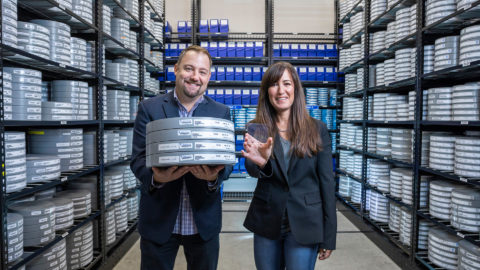IT Solutions: Octobot is the world’s first completely soft robot
Robots are usually made of cold, unforgiving metal that isn’t very pleasant to interact with. Scientists have been working on so-called “soft robotics” in recent years to make machines a little more flexible in the real world, and a team from Harvard has created the first ever completely soft robot using a combination of 3D printing, pneumatics, and chemical reactions. It contains no electronics or solid components at all.
Soft robotics often take inspiration from the noble octopus, so it’s only right that the first fully soft robot should mimic this creature. It’s called the Octobot, of course. The body of the Octobot was built with a combination of 3D printing, molding, and soft lithography. Each of the limbs contains a pneumatic channel connected to a central microfluidic logic circuit that controls the flow of fuel. It’s like a simple circuit board, but without any of the solid components.
The chemical reaction that powers the Octobot is the catalyzed decomposition of hydrogen peroxide with a platinum catalyst. That produces water and a large volume of oxygen gas. The oxygen is what causes the limbs to move as it makes its way down the pneumatic channels. The microfluidic logic circuit controls which limbs the gas flows into as it is produced.
In the video above, you can see the Octobot’s limbs moving, but they don’t seem to be doing anything particularly useful, and that’s because they aren’t. This robot isn’t mobile or capable of interacting with its environment. It’s just a proof of concept to see if a chemical reaction and logic circuit can control the movement of a soft robot. The experiment was a success, so the next step is to devise a more complex version that is able to swim and interact with objects. I’m sure it will be the cuddliest robot/Spectre logo ever.
For more information and a personalized IT Solutions business offer, please contact us.
Source: www.geek.com



